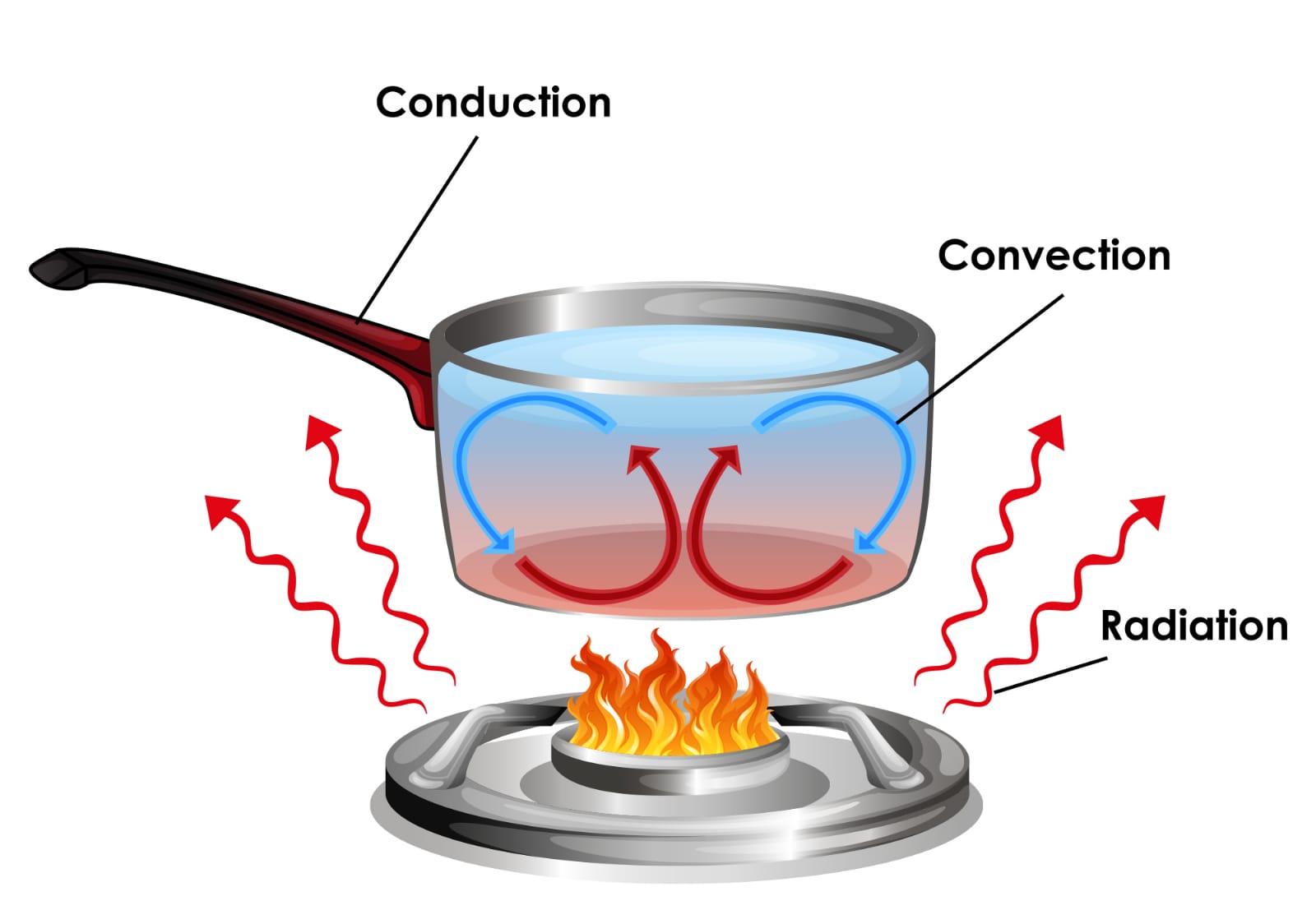Thermal Covers work via three modes of insulation
Choosing the right protection for your valuable products, because….
Radiation is a mode of heat transfer that utilises electromagnetic waves, rather than particles, to move energy from one location to another. It depends on temperature differences between two objects or regions for its effectiveness. Unlike conduction and convection, radiation does not rely on a medium for transferring heat, making it highly efficient in different settings. It involves the emission of electromagnetic waves from a warmer source and their absorption by cooler surfaces, resulting in the transfer of thermal energy without physical contact. Its ability to penetrate empty space makes it ideal for heating and cooling purposes in industrial processes and space exploration technologies over vast distances.

Convection is the primary mode of heat transfer that occurs within a fluid. As the fluid is heated, its molecules gain kinetic energy and begin to move more rapidly, causing them to spread out and become less dense. This creates a density gradient within the fluid, with warmer, less dense fluid rising while cooler, denser fluid sinks. The resulting circulating flow pattern is known as convection currents. As this movement continues, thermal energy is exchanged through direct contact and mixing between the warm and cool regions of the fluid. By evenly distributing thermal energy throughout the system, convection enables efficient heat transfer and maintains temperature equilibrium within a body of fluid. It also plays a crucial role in ensuring effective heat distribution across different regions.

Conduction is a key process in heat transfer between objects that are in direct contact. When two objects touch, their molecules interact and transfer energy through collisions. This causes the hotter object to transfer its kinetic energy to the cooler one, resulting in a flow of heat. The rate at which conduction occurs depends on factors like temperature difference, thermal conductivity, and surface area of contact. This process helps maintain thermal balance between neighbouring objects and allows for efficient heat exchange without using an intermediary medium. Having a grasp of this concept allows engineers and scientists to create effective systems for controlling thermal energy in different applications.




